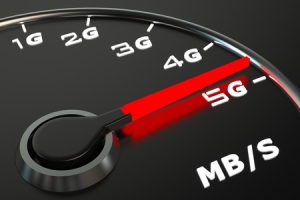At the Ultra-Broadband Forum (UBBF 2017) in Hangzhou, Huawei launched its 5G microwave bearer solution. Featuring 10 Gbit/s-to-site, smooth evolution, and flexible O&M, it supports 5G application scenarios, helping operators manage future challenges in 5G bearer networks.
5G application scenarios include Enhanced Mobile Broadband (eMBB), Ultra-Reliable and Low-Latency Communication (URLLC), and Massive Machine Type Communication (mMTC). The IMT-2020 report, published by the ITU, defined 5G and laid out its requirements, specifying that 5G should support 10 Gbit/s per user, 1 ms latency, and 1 million device connections per square kilometre. These requirements pose a brand new challenge for bandwidth, latency, and flexibility of bearer networks. In practice, 5G deployment is very complex.
As the number of 5G base stations continues to increase, the fiber to the mobile base station (FTTM) rate becomes low and limited CAPEX budgets become apparent. This creates huge demands for microwave transport. Data shows that about 50%–60% of the world’s mobile base stations have used microwave backhaul. Therefore, 5G transport using legacy microwave links is also a focus for global operators.
To address operators’ 5G bearer requirements, Huawei has launched a next-generation 5G microwave bearer solution, which features the following:
10 Gbit/s-to-site
Huawei’s 5G microwave bearer solution uses both the intra-band carrier aggregation technology and inter-band Super Dual Band and MIMO technologies to provide a maximum of 10GE to the site, meeting the requirements of evolving most base stations towards 5G. In addition, 8192QAM modulation, 112/224 MHz channel bandwidth, and co-frequency interference cancellation technologies can be used together to increase the bandwidth of common bands.
With the unique chip and innovative algorithm developed by Huawei, Huawei is currently the world’s only microwave solution vendor that has the ability to aggregate four carriers for common bands. Through the carrier aggregation technology, operators not only significantly increase single-site microwave transmission bandwidth but also greatly reduce engineering and installation costs caused by network upgrade or evolution. More importantly, the carrier aggregation technology helps reduce the tower space by 50%.
Smooth evolution
“Smooth upgrade and no worries for 10 years” is Huawei’s commitment to customers. Huawei’s 5G microwave bearer solution is dedicated to help customers maximise the use of their assets on the live network to meet 5G bearer requirements. With the carrier aggregation technology, hardware deployment and multiple software upgrades can be performed to smoothly match the traffic growth on the wireless side, minimising customers’ initial CAPEX investment.
Super Dual Band can also be employed to integrate common-band microwave on the live network with E-band microwave to achieve a significant bandwidth increase from hundreds of Mbps to the maximum of 10 Gbit/s. The modular antenna design can keep the antenna body unchanged and transform single-polarised antennas to dual-polarised antennas by replacing only feeders, achieving an improvement from common-band antennas to E-band antennas.
Flexible O&M
As services increase and the network scale becomes more complex, networks in the 5G era must provide more flexible and intelligent O&M. Huawei’s 5G microwave bearer solution has incorporated SDN and L3 routing functions, greatly reducing network O&M costs. SDN coordinates backhaul and wireless access networks. During off-peak hours, it disconnects idle links to reduce power consumption by a maximum of about 15%, helping achieve energy conservation and emission reduction. In addition, automatic configuration and service provisioning greatly reduce human costs.
5G microwave, as part of Huawei’s 5G-oriented X-Haul mobile bearer solution, addresses customers’ live-network requirements to help them evolve towards 5G. This not only pushes the microwave industry ahead but also drives business success for operators.
Comment on this article below or via Twitter: @IoTNow_OR @jcIoTnow










